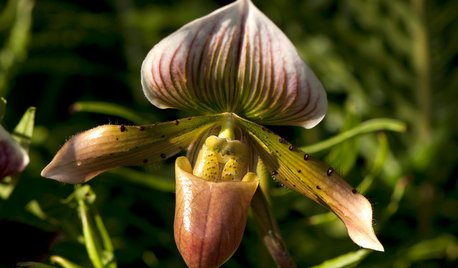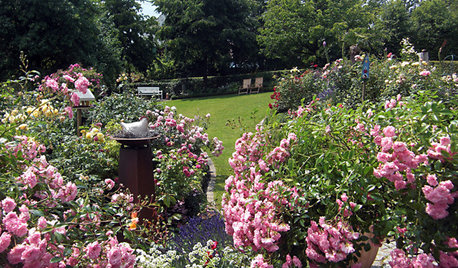pink lady's slippers
bcubed
18 years ago
Related Stories

HOUSEPLANTSOrchids 101: Slipper Orchid Success
If you don’t already love Paphiopedilums, learning how to grow them with ease might change your mind
Full Story
FURNITUREThe Classic Slipper Chair: A Handy Accent for Any Room
14 great ideas for using this superbly versatile armless chair around the house
Full Story
GARDENING GUIDESGreat Design Plant: Slipper Plant
Unthirsty succulent looks great all year and offers an unexpected surprise in fall
Full Story
LIFESimple Pleasures: Put On Your Slippers
Preserve the peace and protect your floors and carpets by turning your home into a no-shoes zone
Full Story
SHOP HOUZZShop Houzz: The Lady’s Home Office
Go girly with unabashedly bright and feminine office furnishings and accessories
Full Story0

HOUZZ TOURSHouzz Tour: Three Men and a Lady's DIY Paradise
One Handy Mom Takes Her Home from Blah and Beige to Bold and Beautiful
Full Story
GARDENING GUIDES5 Sweet to Spirited Pink Roses for an Enchanting Garden
Whether you go demure or daring, there's a pink rose here to make you flush with garden pride
Full Story
COLORDreaming in Color: 8 Pretty-in-Pink Bedrooms
Don't be afraid to rethink pink: Try softer hues for soothing comfort or bolder tones for a touch of drama
Full Story
SHOP HOUZZShop Houzz: What’s Hot in the Kitchen? Think Pink
A little hot pink can make a grand statement paired with neutrals in the kitchen
Full Story
MOST POPULARHomeowners Give the Pink Sink Some Love
When it comes to pastel sinks in a vintage bath, some people love ’em and leave ’em. Would you?
Full StorySponsored



kwoods
cev1
Related Discussions
Last of my Pink Ladies Slippers are ready
Q
Pink lady slippers
Q
Pink lady's slipper disease
Q
Pink Lady's Slippers Won't Bloom
Q
slipperlover440
reginacw
Fledgeling_
reginacw
kwoods
reginacw
reginacw
bcubedOriginal Author
terrestrial_man
yarthkin
reginacw
housenewbie
garlicgrower
bkelley408
cypss522
bbehan
Crux1212_hotmail_com
terrestrial_man
ravenh2001